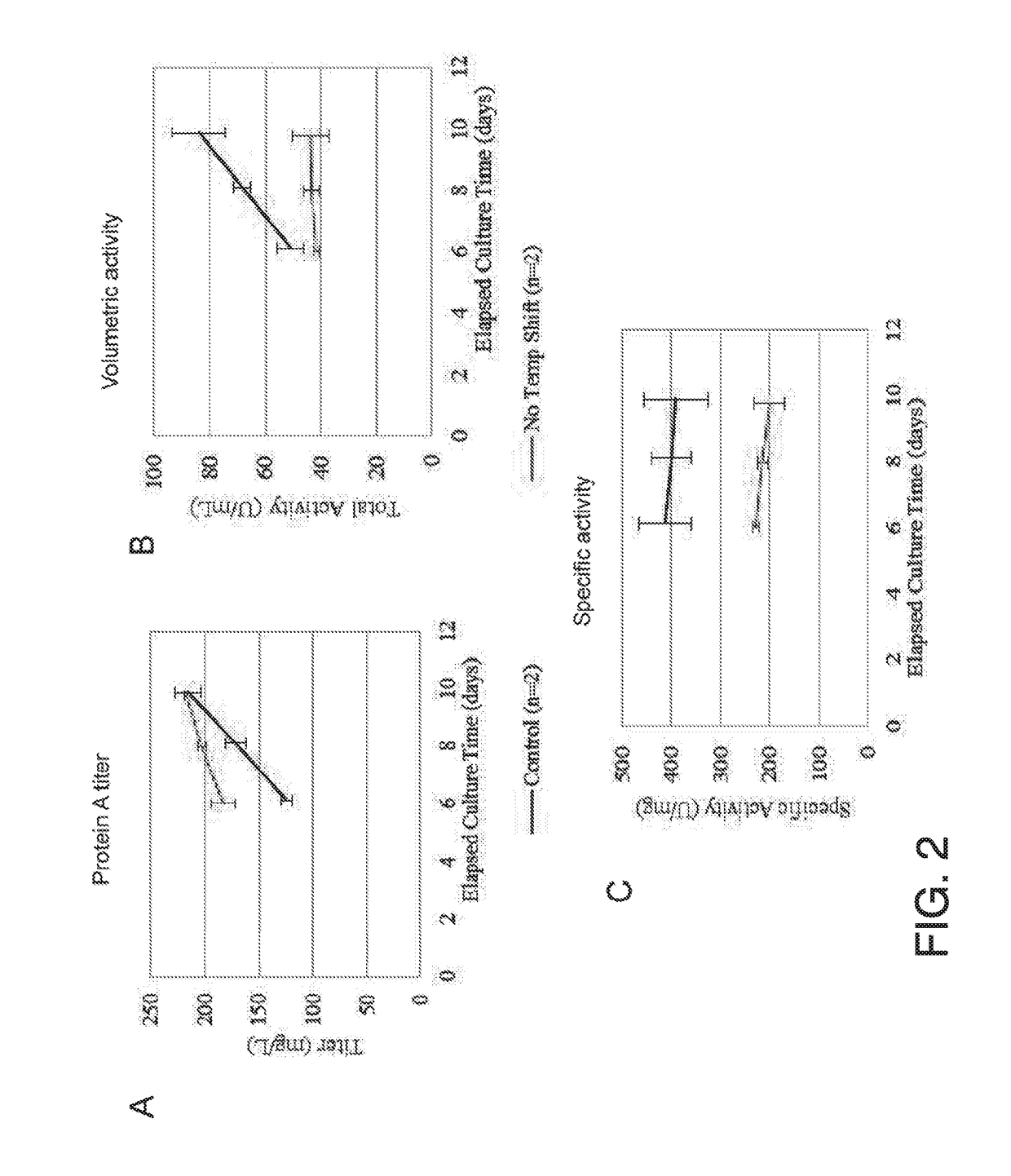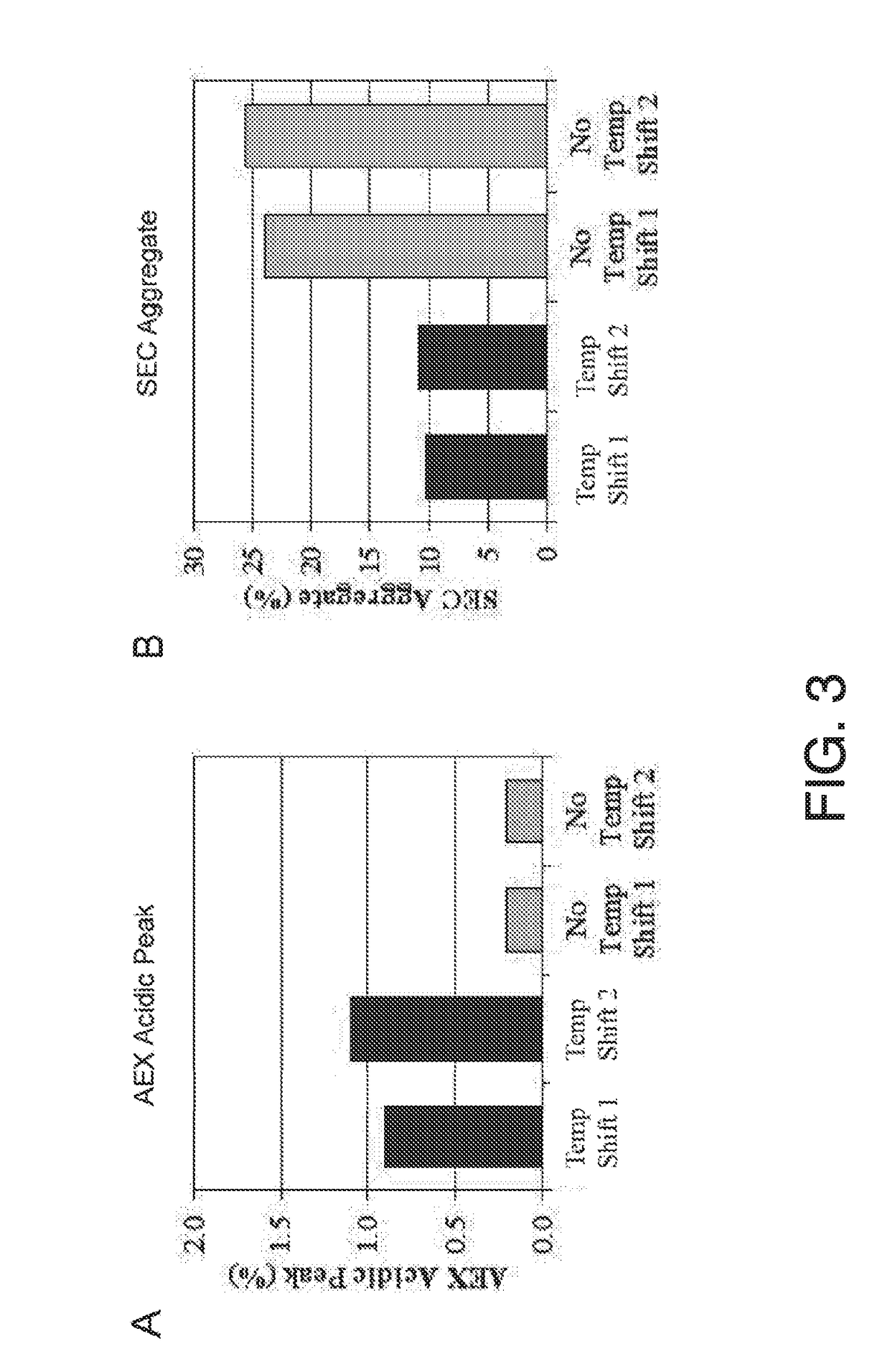Manufacturing of alkaline phosphatases
a technology of alkaline phosphatase and polypeptide, which is applied in the direction of peptide/protein ingredients, drug compositions, enzymology, etc., can solve the problems of inability to produce functional tissue non-specific alkaline phosphatase (tnsalp), impairment of growth, and disfigurement of joints and bones, so as to improve the specific activity and improve the activity of recombinant polypeptide. , the effect of improving
- Summary
- Abstract
- Description
- Claims
- Application Information
AI Technical Summary
Benefits of technology
Problems solved by technology
Method used
Image
Examples
example 1
anufacturing Process for Asfotase Alfa
[0120]As described herein, a manufacturing process to produce alkaline phosphatases (e.g., asfotase alfa (sTNALP-Fc-D10)) has been developed.
TABLE 1Differences between exemplary manufacturing processes (upstream)Process XProcess YProcess ZParental CellCHOCHOCHOlineProductionHyClone SFM4CHOHyCloneHyClone SFM4CHO +mediumSFM4CHOBD selectFeedCHO Feed (0.5%)CHO Feed (2%, i.e.,CHO Feed (2%) +4 × medium feed)Cell Boost 2 + 5 (9%)pH set point6.906.906.90Temperature37.0° C. then shifted to37.0° C. then shifted37.0° C. then shifted to30° C.to 30° C.30° C.DO40%40%40%SupplementN / AN / AZnSO4Harvest time240 ± 12 hr240 ± 12 hr240 ± 12 hr
[0121]Stable CHO cell lines expressing asfotase alfa were developed using the GS gene expression system. Secondary clones were derived from high producing primary clones in a single round of limited dilution cloning and a final cell line was selected.
[0122]An exemplary manufacturing process, Process X, is described herein. A vial...
example 2
Temperature Shifting on Asfotase Alfa Productivity and Quality
[0124]Among different manufacturing processes adopted and practiced for producing sTNALP-Fc-D10, temperature shifting is generally found to affect the productivity and final asfotase alfa quality. Temperature shift from growth temperature (comparatively high temperature) to production temperature (comparatively low temperature) was implemented in all processes.
[0125]To compare the effects of temperature shifting versus no shifting, duplicate sTNALP-Fc-D10 production bioreactor runs were conducted, wherein there was or was not a temperature shift. Sartorius 2 L and 10 L bioreactors were used for different production processes. In this exemplary process, raw materials used in the production bioreactors included, e.g., production medium, 10% Sodium carbonate, CHO feed, and glutamine stock solution, as summarized in Table 4. SFM4CHO refers to serum free medium for CHO.
TABLE 4Process Parameter in An Exemplary ProcessProcessPar...
example 3
pstream Process Parameter Assessment for Exemplary Process #2
[0136]This example summarizes the initial assessment of upstream manufacturing process parameters for an exemplary asfotase alfa manufacturing process #2 and their potential to impact critical quality attributes of produced asfotase alfa. Some upstream process parameters include % aggregation, % fragmentation, sialylation, glycosylation, charge distribution, and specific activity.
Cell Culture
[0137]All production processes referenced in this study were conducted either in shake flasks or bioreactors. Post thaw, cells were expanded through a series of shake flasks and spinner flasks prior to the inoculation of the production bioreactor. The production bioreactor (2 L, 5 L, 10 L, or 200 L) was scaled using consistent power per volume and sparge gas volume per liquid volume per minute (VVM), unless otherwise specified. The temperature of the production bioreactor was controlled at 36.5° C. from 0 to approximately 120 hours, an...
PUM
| Property | Measurement | Unit |
|---|---|---|
| temperature | aaaaa | aaaaa |
| temperature | aaaaa | aaaaa |
| temperature | aaaaa | aaaaa |
Abstract
Description
Claims
Application Information
 Login to View More
Login to View More - R&D
- Intellectual Property
- Life Sciences
- Materials
- Tech Scout
- Unparalleled Data Quality
- Higher Quality Content
- 60% Fewer Hallucinations
Browse by: Latest US Patents, China's latest patents, Technical Efficacy Thesaurus, Application Domain, Technology Topic, Popular Technical Reports.
© 2025 PatSnap. All rights reserved.Legal|Privacy policy|Modern Slavery Act Transparency Statement|Sitemap|About US| Contact US: help@patsnap.com



